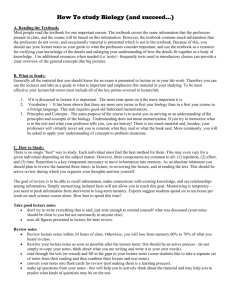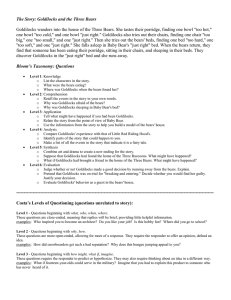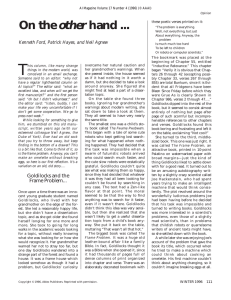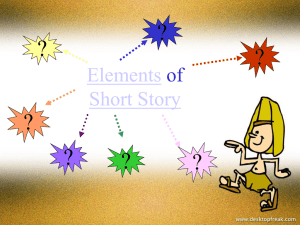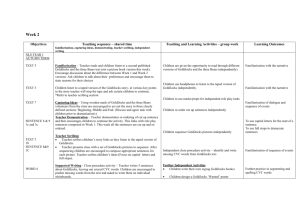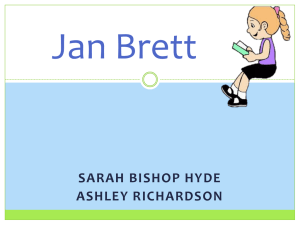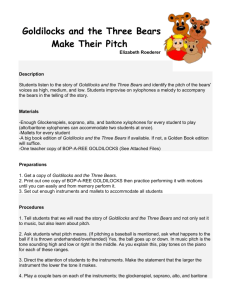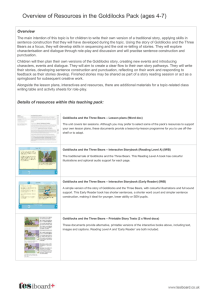Attention Grabber 1 sentence summary of each story. Thesis Topic
advertisement
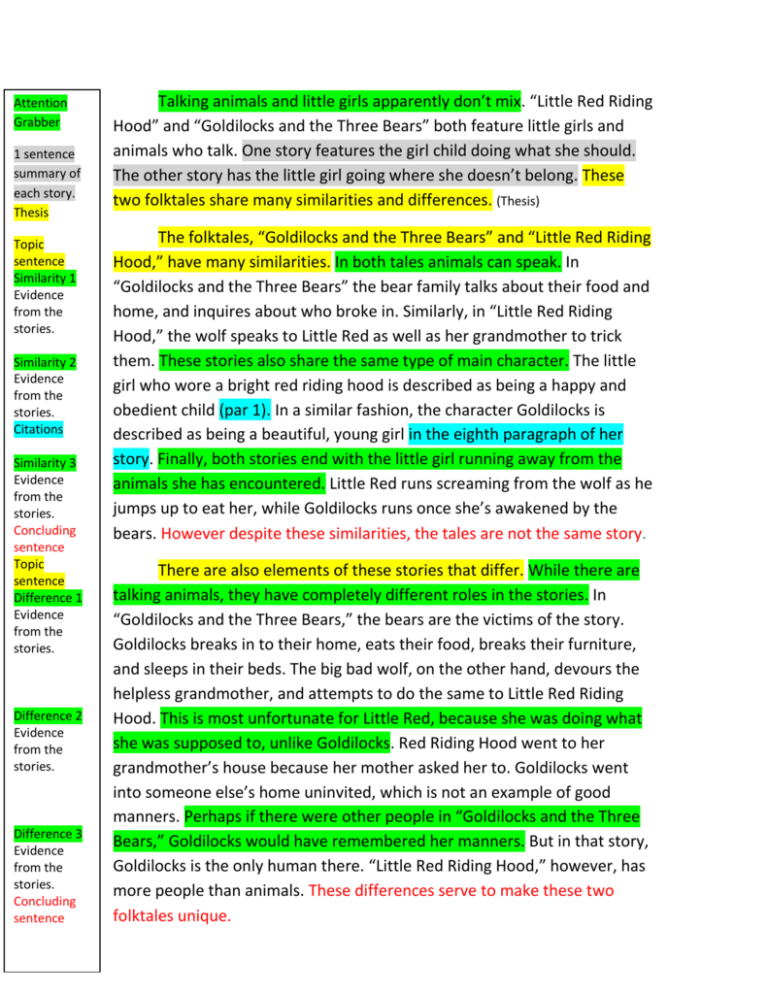
Attention Grabber 1 sentence summary of each story. Thesis Topic sentence Similarity 1 Evidence from the stories. Similarity 2 Evidence from the stories. Citations Similarity 3 Evidence from the stories. Concluding sentence Topic sentence Difference 1 Evidence from the stories. Difference 2 Evidence from the stories. Difference 3 Evidence from the stories. Concluding sentence Talking animals and little girls apparently don’t mix. “Little Red Riding Hood” and “Goldilocks and the Three Bears” both feature little girls and animals who talk. One story features the girl child doing what she should. The other story has the little girl going where she doesn’t belong. These two folktales share many similarities and differences. (Thesis) The folktales, “Goldilocks and the Three Bears” and “Little Red Riding Hood,” have many similarities. In both tales animals can speak. In “Goldilocks and the Three Bears” the bear family talks about their food and home, and inquires about who broke in. Similarly, in “Little Red Riding Hood,” the wolf speaks to Little Red as well as her grandmother to trick them. These stories also share the same type of main character. The little girl who wore a bright red riding hood is described as being a happy and obedient child (par 1). In a similar fashion, the character Goldilocks is described as being a beautiful, young girl in the eighth paragraph of her story. Finally, both stories end with the little girl running away from the animals she has encountered. Little Red runs screaming from the wolf as he jumps up to eat her, while Goldilocks runs once she’s awakened by the bears. However despite these similarities, the tales are not the same story. There are also elements of these stories that differ. While there are talking animals, they have completely different roles in the stories. In “Goldilocks and the Three Bears,” the bears are the victims of the story. Goldilocks breaks in to their home, eats their food, breaks their furniture, and sleeps in their beds. The big bad wolf, on the other hand, devours the helpless grandmother, and attempts to do the same to Little Red Riding Hood. This is most unfortunate for Little Red, because she was doing what she was supposed to, unlike Goldilocks. Red Riding Hood went to her grandmother’s house because her mother asked her to. Goldilocks went into someone else’s home uninvited, which is not an example of good manners. Perhaps if there were other people in “Goldilocks and the Three Bears,” Goldilocks would have remembered her manners. But in that story, Goldilocks is the only human there. “Little Red Riding Hood,” however, has more people than animals. These differences serve to make these two folktales unique. Restated Thesis 3 key ideas, summarized Concluding thought While there are differences, “Goldilocks and the Three Bears,” and “Little Red Riding Hood,” share many attributes as well. Both tales have talking animals that speak as though they are human. They also have the same basic ending as the little girl runs away. However, the little girls behave differently, one doing as she is asked, the other going where she shouldn’t. Overall, there do seem to be more similarities of these traditional European folktales than differences.

